
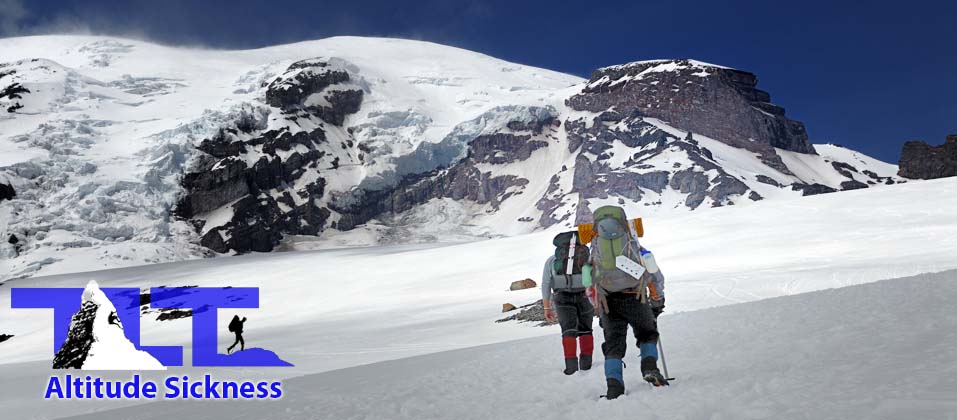
ALTITUDE is a very real problem for climbers of all abilities and ages, and some people are more susceptible to it than others (for reasons unknown). Most are fine up to 8,000 feet, but above this, AMS (Acute Mountain Sickness) affects many more people. This is not to say that it does not occur at lower elevations, but it is less common.
Most sources set the bar for high altitude at 10,000 feet. This being so, even ranges such as the California Sierra Nevada, the Colorado Rocky Mountains, the European Alps, and many other ranges throughout the world have numerous peaks that exceed this level. Since multitudes of people have access to the above mentioned ranges, it is to be assumed that many (who venture into the realms of high altitude) will experience the sickness first hand. To put a number on it, it is estimated that about 20% at 8,000 feet and 75% at 10,000 feet or higher will experience some form of AMS when coming from lower elevations.
Therefore, we feel that it is important to give you some of the basics on the subject of Acute Mountain Sickness. In this section, we will be examining the cause, symptoms, preventative measures, and treatment of "AMS." Lastly, we will discuss the less common (but far more serious) high altitude ailments known as High Altitude Cerebral Edema (HACE) and High Altitude Pulmonary Edema (HAPE). (Above 10,000 feet, HACE affects approx 1% of people, and HAPE affects approx 2%).
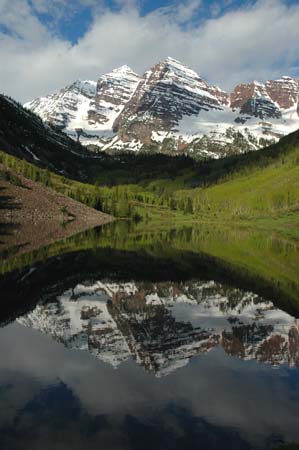 CAUSE OF ACUTE MOUNTAIN SICKNESS (AMS)
CAUSE OF ACUTE MOUNTAIN SICKNESS (AMS) The cause of high altitude sickness is two fold, less oxygen and less pressure (they go hand and hand). At sea level, we have a reading of 29.92 inches of mercury, but this drops to 20.57 at 10,000 feet. This means that at 10,000 feet above sea level, you will have about 1/3 (31.25%) less pressure. Now if a low pressure weather system moves in, this can drive the above numbers down a bit lower. Meteorologists estimate that low or high pressure systems can make up to a 3 to 4 percent difference in the barometric pressure. Those who find themselves highly subject to altitude sickness may want to consider this when planning for a trip to higher altitudes.
Now the percentage of oxygen in the atmosphere remains constant at all times. Scientists put a value of 21% on it. But this is only part of the story, because even though the percentage remains constant, the amount of oxygen molecules does not. Because when the air pressure drops, the quantity of oxygen molecules decreases, even though the percent makeup of the oxygen remains at 21%. This is so, because the amount of nitrogen and other gases that make up our atmosphere also drops. Therefore, at higher altitudes, your lungs will have less oxygen to supply the red blood cells with.
There is also the physiological aspect. For even though the pressure is only a third less, due to pressure, the actual amount of oxygen that is available in the blood at 10,000 feet is only about half. This is due to something called "Oxygen Tension" which is instrumental in permitting the body to absorb oxygen from the lungs.
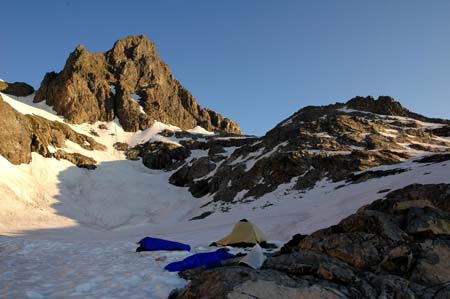 Lastly, you have another factor that plays into the equation, and that is whether you are active or sleeping.
Lastly, you have another factor that plays into the equation, and that is whether you are active or sleeping.Scientists at the Barcroft Research Station on White Mountain, discovered that when someone was asleep on the summit at 14,246 feet, they reacted physiologically the same as someone who was awake at 16,000 feet. This fact verifies why people feel better at higher altitudes when awake and walking around, then when lying down.
So in conclusion, "Altitude Sickness" is caused by low pressure and low oxygen levels. Things such as sleeping vs being awake may exacerbate things, but it is lower atmospheric pressure, which in turn affects the oxygen concentration, that is the main ingredient when it comes to altitude sickness.
But exactly how this all works when it comes to the mechanisms in the body is a little less clear. Some researchers believe that insufficient oxygen may compromise the function of the sodium pumps located within the cell walls. Without sufficient oxygen, the pumps allow sodium levels within the cell to rise. As a result, excess water enters the cells, causing cellular swelling, or edema, a condition that is especially dangerous in the lungs and around the brain.
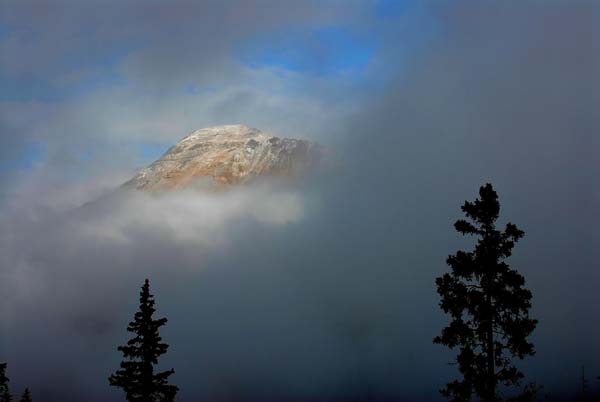 SYMPTOMS:
SYMPTOMS: Though much more severe in cases such as High Altitude Pulmonary Edema (HAPE), and High Altitude Cerebral Edema (HACE), all forms of altitude sickness involve the abnormal movement of body fluids. Even milder forms of altitude sickness involve fluid changes in the brain, causing headaches.
ACUTE MOUNTAIN SICKNESS (AMS)
- Headache
- Irregular breathing.
- Fatigue and/or weakness
- Nausea that may lead to vomiting Shortness of breath
- Difficulty Sleeping
- Loss of appetite - (blood being diverted from the stomach to the heart, lungs and brain)
- Tightness in the chest area Dizziness Swelling of the face, hands, and feet
HIGH ALTITUDE PULMONARY EDEMA (HAPE)
- Cough that starts out dry, but can become hacking and produce pink frothy sputum as the condition worsens. (emergency situation)
- Extreme weakness and dizziness.
- Breathing and pulse continue to rise.
- Lips and nail beds take on a blue tinge.
- More likely to develop in people with colds or chest infections.
- Can occur even after descending.
- Causes many more deaths then high altitude cerebral edema.
- Crackling and/or gurgling sounds in the chest. (these symptoms are extremely grave, and death could be emanate if emergency action is not taken)
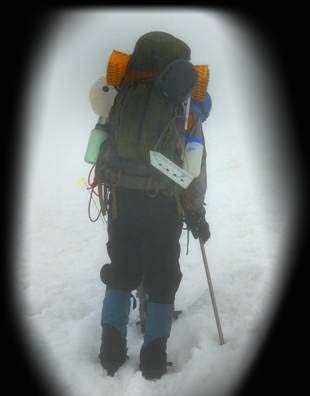 ALTITUDE CEREBRAL EDEMA (HACE)
ALTITUDE CEREBRAL EDEMA (HACE)
- Severe headache.
- Confusion and or possible hallucinations.
- Loss of coordination (Walking around like someone who is drunk. Test by having subject walk heal to toe.)
- Problem performing simple tasks like tying boots.
- Thinking process becomes clouded (Sign of rapid deterioration. Test by asking individual to do simple math)
- Loss of muscular control on one side of the body (also a grave sign)
- Change in behavior. Uncharacteristic aggressiveness or passiveness.
- Slurred speech
- Blurred or double vision. Seeing halos around objects.
- Extreme fatigue.
- Cannot pass finger-nose test. Have subject alternate with eyes close touching nose with right index finger, then left. (Useful test when victim is lying down)
- Difficult waking individual up.
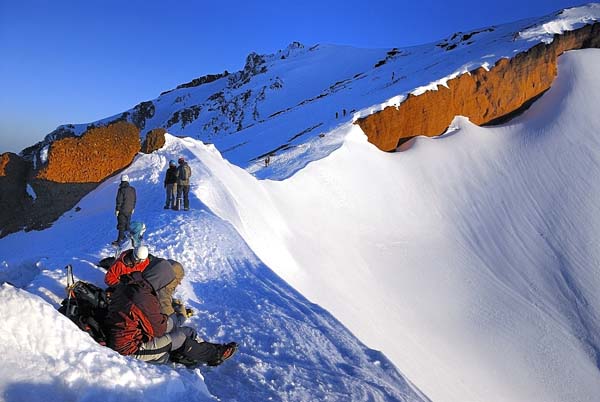 PREVENTION:
PREVENTION: When it come to prevention, we turn to a process known as acclimatization. First we will discuss what the body does to help itself as it ascends. To start off, your breathing rate increases along with your heart rate. This is the body's way of getting more oxygen to the tissues as its availability decreases.
The body then sends more water to the bladder for elimination so that the blood will thicken and carry a higher concentration of red blood cells. This thickening also has a negative side, because it makes it so some tissues will not get a proper supply of blood. If you are subject to blood clots this is not a good situation.
Increased rate of breathing, and increased urination can lead to dehydration if care is not taken to hydrate properly. Adequate fluid intake is very important when it comes to good acclimatization. Higher breathing rates also leads to loss of carbon dioxide from the blood, making the blood more alkaline which suppresses the breathing. But as mentioned above, the kidneys then begin work to excrete alkali from the blood in order to restore a more balanced environment so the climber can continue to take in added oxygen through rapid breathing. Be careful of excessive water drinking, because it may lead to electrolyte imbalances. As you can see, the body does a fine balancing act while you acclimate. So what are the best things a hiker or climber can do when it comes to preventing altitude sickness? Below is a list of items for you to think about.
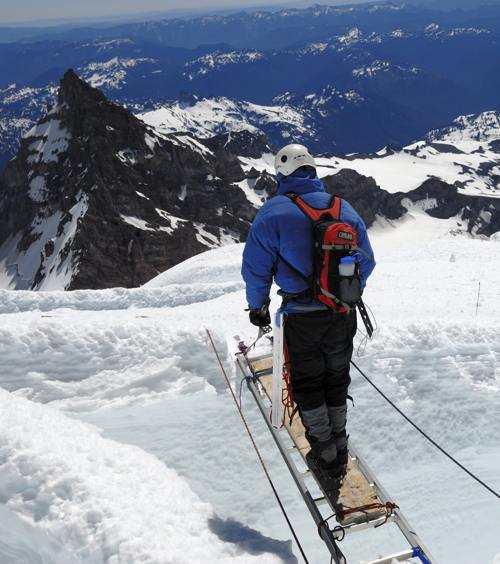
- Every individual is different when it comes to acclimating to altitude, so you need to listen to your body.
- Adhere to the old adage of "climb high and sleep low." Remember when a climber is sleeping or lying down, he or she reacts physiologically in the same way as someone who is active at one or two thousand feet higher. So sleeping at lower elevations really does help when it comes to feeling better, and acclimating faster.
- The best way to acclimate properly is to ascend slowly. The body takes time to make adjustments to altitude. Most often there is no reason to rush up to your high camp, only to stand around and wait for nightfall. Activity is great, and an active climber acclimates faster than an inactive one. But overexertion tends to bring on altitude sickness. Limiting your sleeping altitude to no more than 1,000 feet higher than the previous nights above 8,000 feet works best. If you decide to violate this rule you increase your chances of getting sick, and it may require you to descend in order to alleviate symptoms.
- Again, listen to your body. Do not ignore the warning signs of impending trouble. As stated above, maintain proper hydration. It is vital for proper acclimatization.
- Once in camp, maintain a level of light activity. I find that people who get to camp and then immediately crash into their tents tend to have more trouble with altitude in general. (this assumes that you get into camp during the daylight hours. Otherwise, you may not have a choice on the matter).
- Avoid alcohol and/or too much caffeine. Alcohol is particularly bad, because it can suppress breathing and/or ventilation. But both caffeine and alcohol are diuretics and can add to the problem of dehydration. The best way to tell if you are properly hydrated is to check your urine color. If it is clear you're OK. If it is dark, then you need more fluids.
- Loading up on carbohydrates, according to high altitude researchers, also helps when it comes to altitude adjustment. This is because carbohydrates are burned more efficiently by the body when under a load, and this results in less oxygen used.
- There are also drugs available to help prevent altitude sickness. Diamox, dexamethasone, nifedipine, and others may have some benefit, but they also have their side effects. As to whether or not you should take any of these drugs, I will leave that up to you and your doctor. I personally have never used them.
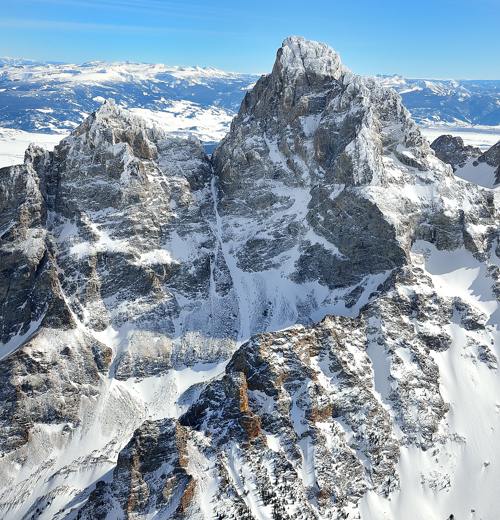 TREATMENT:
TREATMENT:This is the easiest section of all, because it is simple. If altitude sickness becomes a problem the best treatment for it is to GO DOWN. If your symptoms are mild, you may be able to stay at your current elevation, and acclimate to it. But if your symptoms are severe, you must go down. I have had to descend a few times myself because of altitude sickness, and found that it was necessary to descend at least two or three thousand feet before I felt better.
If you have a mild case of altitude sickness, then you may want to try taking a couple of aspirins or some other type of analgesic. But a word of caution here. If after taken a couple of aspirin (or other type of pain killer) and you still don't feel better, then STOP. I have known people who have taken a dozen or more aspirin in the night and all they got for their trouble, was a very upset stomach, and no relief. Continuing on by taking more and more pills not only is an exercise in futility, but it is dangerous. If you find yourself in this situation, you really need to go down. You have gone from mild to severe altitude sickness. The only remedy is to descend to a point to where you feel better.
My rule of thumb is this. If I get to the point to where I throw up, and then afterward don't feel a whole lot better, then its time to head down. I have had to call it quits on more than one occasion because of altitude sickness. But all this being said, I would just like to throw in a little disclaimer here. This is my rule of thumb, and it doesn't mean it should be yours. As I say, everyone is different when it comes to dealing with altitude. The experts would say, "If you vomit, then its time to go down. No matter what." So I will leave you with that final bit of information.
Now if you have symptoms, or if you recognize that someone else in your party has symptoms of High Altitude Pulmonary Edema, or Cerebral Edema, then you, or they need to be accompanied down the mountain immediately, no matter what time of day or night (everyone should always carry a headlamp). Some research says go down at least 3,000 feet, but I say go down all the way, and get to a doctor right away. HAPE and HACE are potentially fatal disorders. You cannot fool around with them. Even if you do not die, it is possible for some of the symptoms to linger on for weeks after the incidence. All altitude related disorders are completely preventable if you act wisely. It is always best to descend early on before you deteriorate to the point of finding yourself in a potentially fatal situation.
So in conclusion, listen to your body and be aware of the condition of your climbing and hiking partners. It could just mean the difference between life and death. I find that the reason why most people ignore clear warning signs of trouble is because they have a lot of time and/or money invested in a climb or outing. They hate to give up on their goal. I found myself in this situation once and got frostbite as a reward for my shortsightedness. Remember, no summit is worth your life. The mountain will always be there. But will you if you make foolish choices?
 PERSONAL EXPERIENCE:
PERSONAL EXPERIENCE:Even though I have climbed mountains in Wyoming, Colorado, and in other places, most of my experience with altitude has been in the Sierra Nevada located in California. Myself, along with my two sons are subject to altitude sickness, and we have to plan accordingly. Living in a suburb of Los Angeles, we are able to go from near sea level to elevations between 10,000 - 14, 000 feet very quickly. When we do this, we find that we need at least one night at between 8,000 - 10,000 feet before going higher. If we do not do this, and go straight to 12,000 feet or more and set up camp for the night, we are going to get real sick and will most likely have to go down. But as mentioned in the prevention section, everyone is different. Some may find that the above regimen is too much. But others may be able to go straight on up to 12,000 feet or more and be just fine.
Our problem is that we don't have a whole lot of time off, but really enjoy backpacking and mountaineering. However, the above time factor makes it so we have to ascend quickly, and this is not good for anyone who is subject to altitude sickness. So if you find that you suffer from AMS, the best thing to do is to ascend slowly. Take your time. You will find that this will usually solve any altitude problems.
On a peak such as Mt Whitney, this can easily be done by sleeping at the Portal for one night, Outpost Camp the next, then onto Trail Camp, and lastly to the summit and back. This is a very comfortable pace, and it does take extra days out on the mountain, but it would be the best way to avoid altitude sickness for most people Email Sign Up
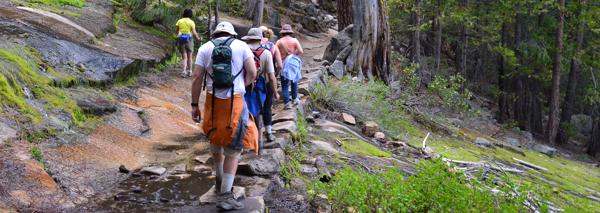
| Join the Adventure! Sign up here for Timberline Trails Monthly Newsletter |

Join us on Instagram

©2006-2024 TimberlineTrails. All Rights Reserved.
....